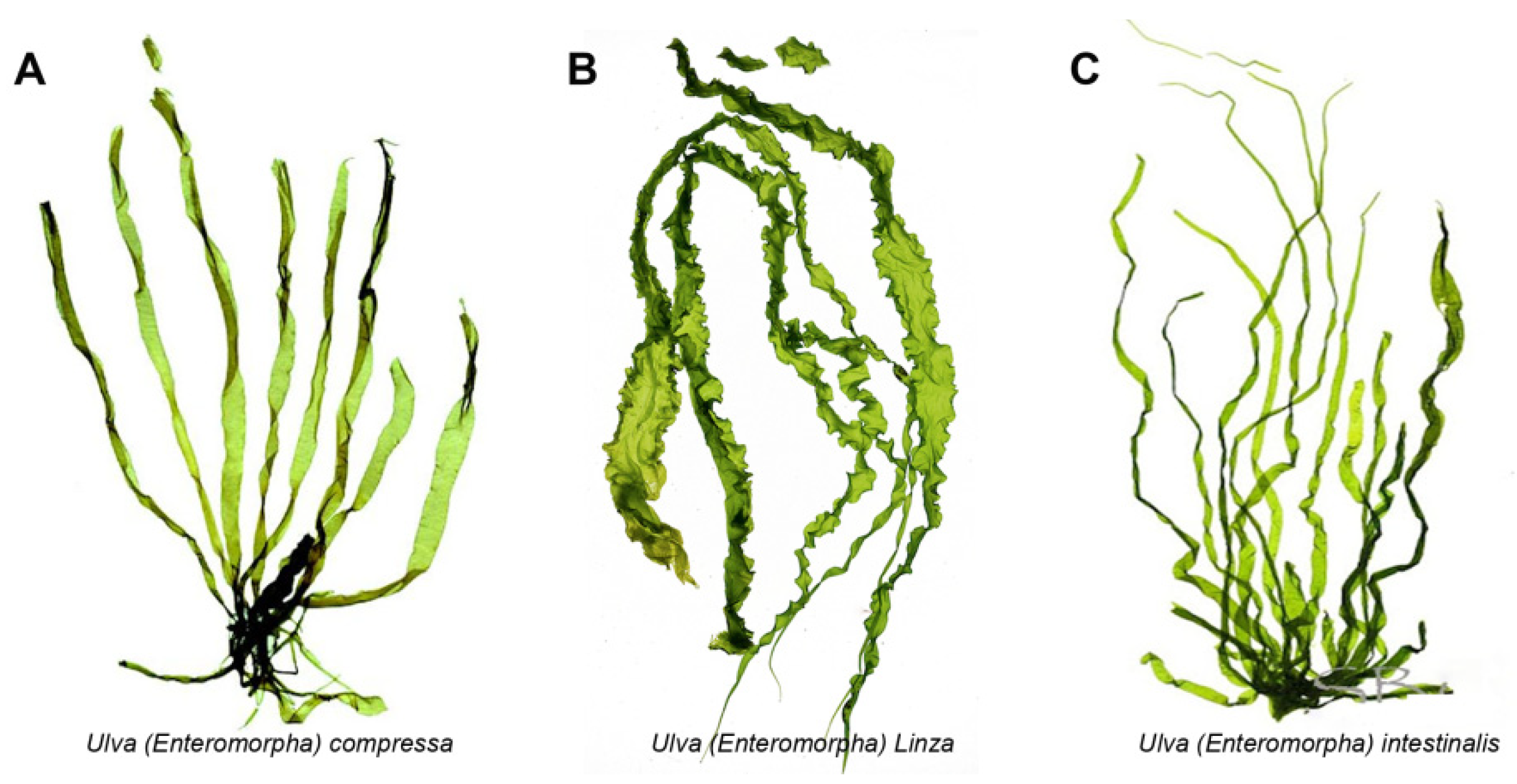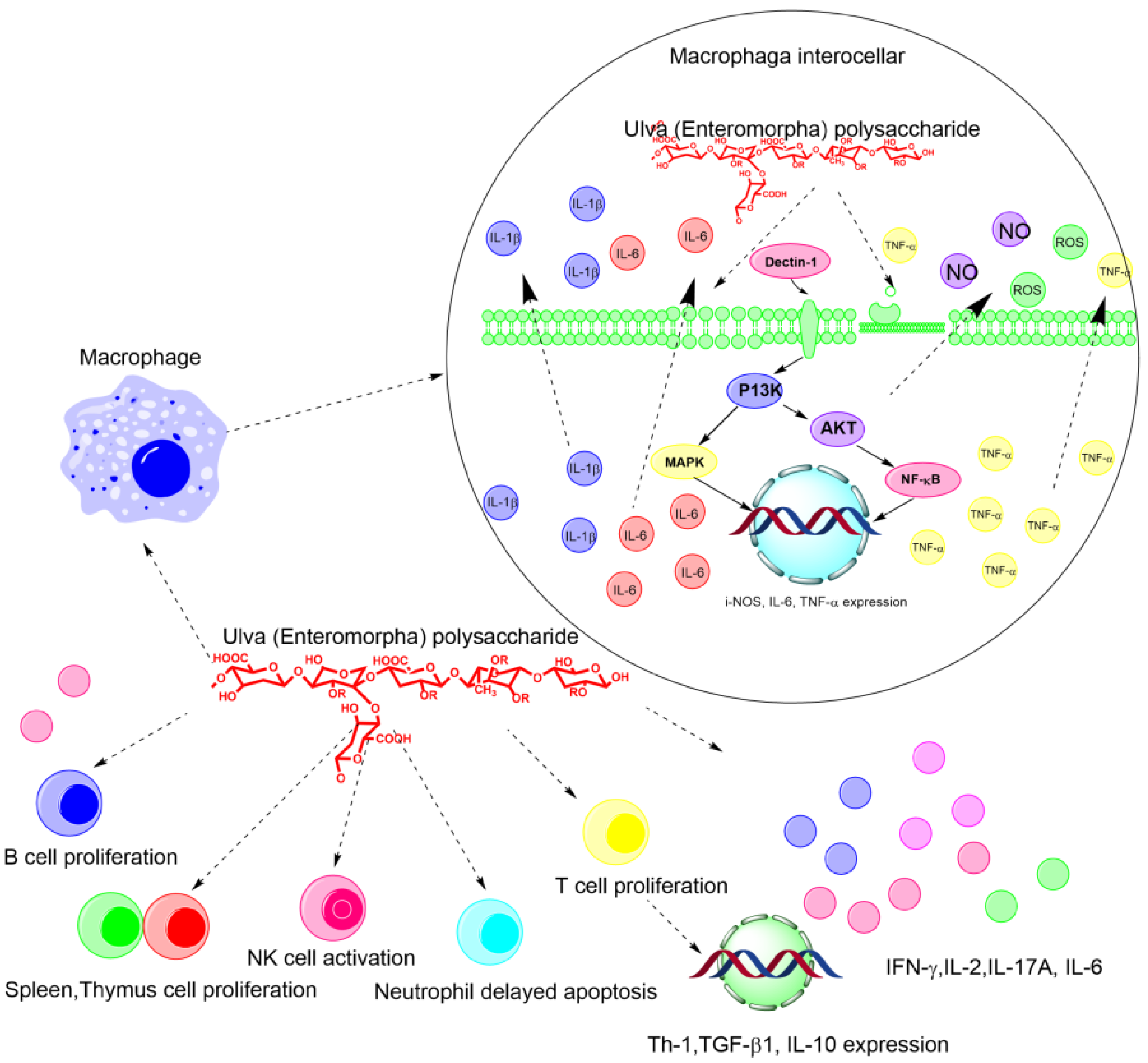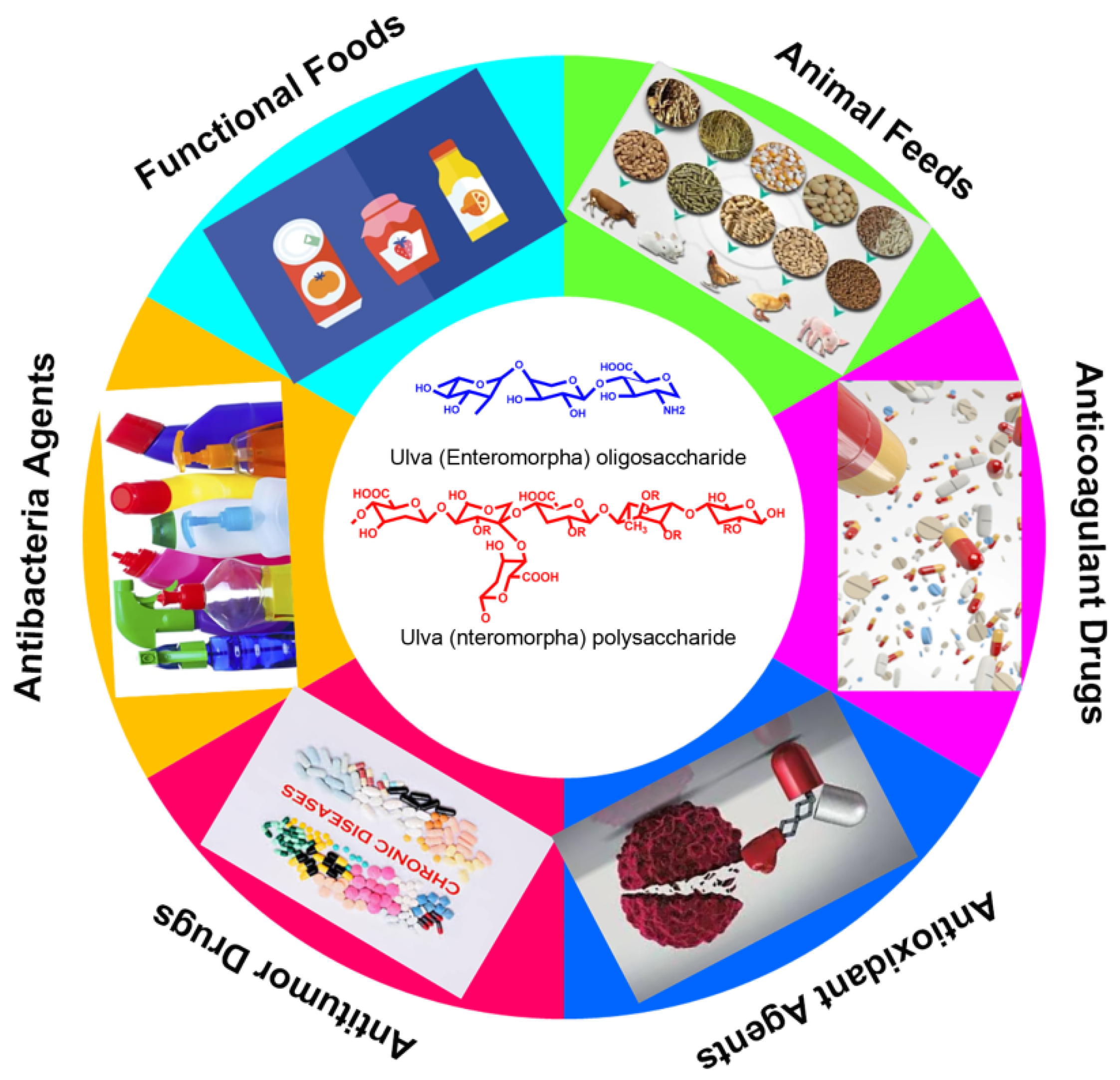So far, more and more studies are focusing on the activity of
Ulva oligosaccharides [
22,
23]. However, the reports are still very scattered with the mechanism of related activity and the structural-activity relationship of oligosaccharides was still undefined due to the complexity of the
Ulva oligosaccharides’ structure. Lü et al. evaluated the antibacterial activity of
Ulva oligosaccharides and their selenized derivatives prepared by acid method [
52]. They found that the selenized
Ulva oligosaccharides showed stronger inhibitory activity towards
Eschetichia coli and plant pathogenic fungi than that to
Staphylococcus aureus [
52,
79]. Liu et al. studied the anti-aging and anti-oxidation effects of
Ulva oligosaccharides in SAMP8 mice [
23]. They found that
Ulva oligosaccharides can protect neurons in the hippocampus by significantly reducing the secretion of inflammatory factors such as IFN-γ, TNF-α and IL-6, and improving the brain-derived neurotrophic factor (BDNF) [
23]. Liu et al. evaluated the immunoregulatory effect of
Ulva oligosaccharides in a cyclophosphamide-induced immunosuppression mouse model [
80]. It can be found that
Ulva oligosaccharides can activate the immune system by promoting the secretion of NO, up-regulating the expression of cytokines such as IL-1β, IL-6 and TNF-α, and activating inflammatory bodies such as iNOS, COX2 and NLRP3 [
80]. Xu et al. studied the antioxidant activities of three
Ulva oligosaccharides, and found that
Ulva oligosaccharides can effectively eliminate the DPPH, OH
•, and O
2•− [
25]. Li et al. investigated the antioxidant capacity of
Ulva oligosaccharides and found that the activity was closely related to molecular weight [
74]. Specifically,
Ulva oligosaccharides with low molecular weight can scavenge superoxide anion and hydroxyl radicals with an IC50 of 0.39 mg/mL [
74]. Zhang et al. found that 2.28 mg/mL of
Ulva oligosaccharides prepared by an H
2O
2 oxidation method can scavenge 92.2% of the hydroxyl radical, which is higher than
Ulva polysaccharides with the same concentration [
26]. That is probably because there were more hydroxyl groups in the oligosaccharides’ structure [
26]. Cui et al. prepared complexes of Fe
2+ ions and
Ulva oligosaccharides, which can be used to treat iron deficiency anemia as a nutritional supplement for iron [
81]. Wang et al. discovered that
Ulva oligosaccharides possessed an anticoagulant activity which was closely related to the number and distribution of sulfuric acid groups in oligosaccharides [
69]. Jin et al. prepared ep-3-H, a glucuronic-xylo-rhamnose-component, from
Ulva prolifera, and found that EP-3-H could inhibit cell proliferation of human lung cancer cells by interacting with the fibroblast growth factors FGF1 and FGF2 [
82]. In addition, the physiological activities may differ in
Ulva oligosaccharides and polysaccharides, but the specific mechanism still remains unclear. However, herein could propose the possible reasons based on some experience. The active groups appeared after the linkage of the polysaccharide was broken down by physical, chemical or enzymatic hydrolysis, and therefore the activities of
Ulva oligosaccharide became more obvious than the polysaccharide. To sum up, the current studies on the activity of
Ulva oligosaccharides are relatively superficial since there is still no appropriate method to obtain oligosaccharides with a fine structure for studying the structure-activity relationship of oligosaccharides due to their quite complex structure.


 Figure 3. The potential and promising applications of Ulva polysaccharide and oligosaccharides.
Figure 3. The potential and promising applications of Ulva polysaccharide and oligosaccharides.